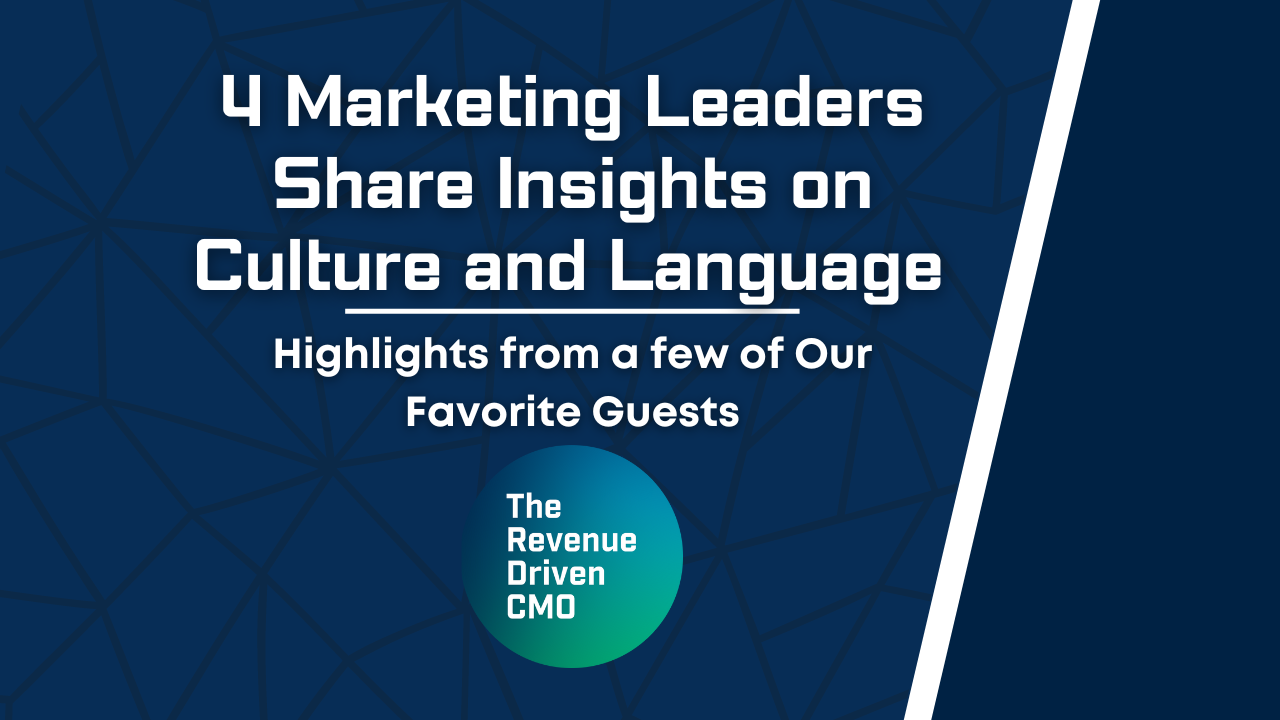
Multi-threading — It’s not just for sales
It’s common knowledge that the more people you have on board, the easier it is to win a deal.
That’s why sales teams build relationships with champions, who can invite other important folks into the sales conversation and feed the rep information about each person’s wants and needs, almost like a spy.
Once the rep and champion get two or three key stakeholders on their side, the rest falls into place.
What if marketing speeds this process up?
On the Revenue-Driven CMO podcast, Isaac Ware shared exactly how marketers can become sales reps’ new best friends, priming an entire buying committee before the first sales call begins.
As the Director of Demand Generation at Usergems, Isaac has applied the traditionally sales-focused multi-threading approach to marketing. By targeting the right people with the right message at the right time, he’s single-handedly 5X’d the company’s close rate.
Read on to learn how a multi-threading strategy works and how you can apply it to help your sales team win bigger deals in less time.
What is multi-threading?
At the most basic level, multi-threading pulls other people from the prospect’s company into a deal to accelerate the close.
So sales teams try to establish relationships with the main stakeholders: users of the product, the CFO, the COO, and anyone else who could have a say in whether the company buys your product or service.
And this strategy works. The Usergems RevOps team found their close rate was five times higher when they had more than five people on the prospect’s team involved in a deal.
How to use multi-threading in marketing
This phenomenon isn’t necessarily new information for sales — they’ve known the impact of having more people in the deal, at least anecdotally.
However, it is new to marketers. The data sitting in their CRM is the key to unlocking the full suite of people who might be involved in a buying decision.
Designing ads and content for these audiences gets them on board before they even speak with sales.
Here’s a simple way to test out this theory before fully adopting it:
- Assign your CRM contacts a value: 1, 2, 3, 4.
- Test multi-threading tactics on 1 and 2, leave 3 and 4 as-is.
- Divide the 1s and 2s up by persona (for example, Sales, Marketing, RevOps)
- Create LinkedIn campaigns for each of those personas.
- These should be specific to their role’s pain point.
- The ad should also inform them that someone on their team has reached out to your sales team already and that they might as well join the call. More on this later.
- Build a dynamic audience that constantly refreshes to push out the corresponding campaign to prospects whenever a new opportunity is created.
- Do as much filtering as you can to get specific on who you’re targeting. Use Usergems and Demandbase to help with this.
- You’ll need to connect LinkedIn to HubSpot, Salesforce, or whatever other CRM you use.
Ware’s team at Usergems saw bits of traction with this kind of split test right away:
- Ads were mentioned on sales calls
- Champions were showing reps screenshots from Slack conversations where people saw the ads and expressed their interest in talking to the sales team
- More people started showing up on preliminary calls
Overall, this strategy significantly speeds up the sales process. Reps don’t have to contact each individual manually and manage late addition to calls. Instead, they naturally end up joining sales calls already primed with information about your company’s main benefits.
What kinds of results can you expect?
Committing to multi-threading can be nerve-wracking because you don’t see its influence until a deal closes. It’s not like other ads where you see demo requests flowing in.
But there are ways to measure its effectiveness. At the end of the month or quarter, review all the closed won deals and identify which ones had buying committees targeted through multi-threading.
Then, do some analysis. Figure out:
- Win rates
- Deal sizes
- Number of contacts involved in a deal
- Sales cycle length impact
And this strategy was particularly effective with CFOs, who were often blockers in their deals.
Ware says, “With CFO ads, we didn’t ask ‘do you want to join the deal?’ because AEs would’ve lost their minds. Instead, we featured testimonials from other CFOs. And we used our sales calls to identify the language that CFOs were using in their objections so we could get ahead of those qualms without even pulling them into the deal.”
After their first test, they saw:
- 31% higher win rates across the board
- 25% bigger deal sizes
- 67% more contacts involved in a deal
- 17% shorter sales cycle on average
How much does multi-threading cost?
Multi-threading works best when you’re targeting as many people as possible.
For a 60 to 70-person company, we’d suggest 10k – 15k audience sizes for each persona. Saturating this audience can be done with a relatively small budget.
Ware shared, “Multi-threading is only around 10% of our entire paid media budget. We spend a decent amount on it, but it’s not massively expensive. And we could probably get away with 5 – 8% of spend if we had to.”
What do multi-threading ads look like?
Remember – most B2B ads on LinkedIn are boring. You want them to stand out.
So use bold colors. Use bold graphics. Consider adding images of frustrated people. In other words, make them look more like B2C ads.
Get some input from your sales team too. AEs have talked to each one of these personas and know, generally, what prospects’ use cases and pain points are. You can also look for bottom of funnel search volume for those pain points to see who else is talking about it and how they’re doing it.
If you’re a smaller org, you also have the freedom to experiment with this. A/B test a few different ones with your split tests and see what sticks.
What resources do you need?
Your performance marketing team should be able to handle this sort of project, but it might be a good idea to get a virtual assistant who can go in and watch your pipeline closely. They can continually update your account list and personas with open opportunities regularly.
Or, you can use something like Usergems to automate this process. Usergems can also detect job and title changes, which can help you and your sales team find the warmest path into accounts. And this is important — 20% of your CRM contacts change yearly.
With Usergems, you can push this information about your contacts to outbound sales platforms like Salesloft and Outreach. That way, AEs and CSMs can reach out to a champion to congratulate them on their job switch or promotion, keeping your company top of mind.
At the same time, you’re running your multi-threading strategy. That means if a champion moves to a new company, AEs will not only know who will likely be in the buying group, but you’ll have already primed those people for a conversation with your LinkedIn ads.
Multi-threading: Your new secret weapon
Getting plugged into a buying committee is easier said than done. Most of the communication is manual, and convincing multiple people to buy your product or service takes valuable time, stretching out the sales cycle to months or even years.
Multi-threading can dramatically accelerate this process, making your team look incredibly useful in the process. So why not start today?
Learn more about multi-threading, Usergems, and how Isaac Ware avoids burnout in the full episode on The Revenue-Driven CMO podcast.
And if you’re looking for other innovative digital marketing strategies to try, sign up for our next monthly Growth Clinic. See you there!
Most newsletters suck...
So while we technically have to call this a daily newsletter so people know what it is, it's anything but.
You won't find any 'industry standards' or 'guru best practices' here - only the real stuff that actually moves the needle.







